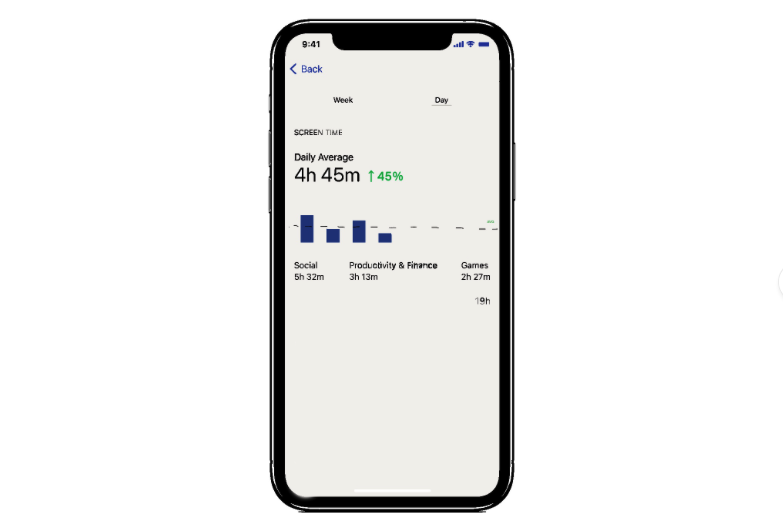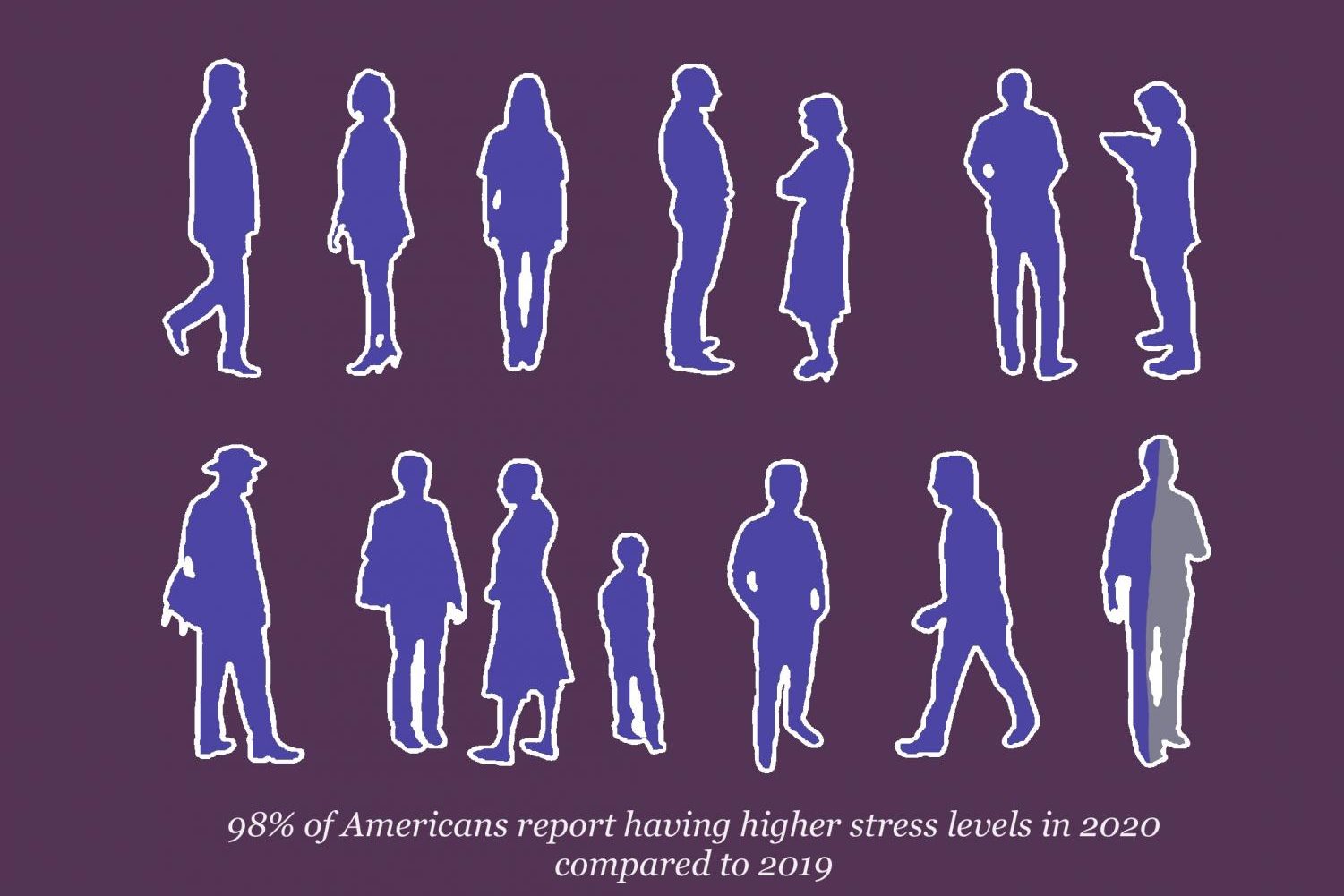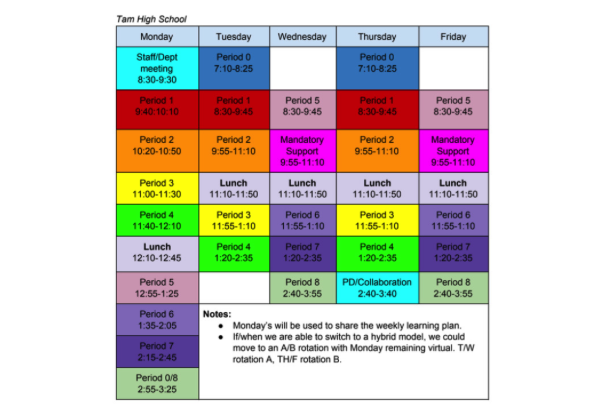Is Distance Learning Healthy?
Oct 17, 2020
The Tamalpais Unified High School District’s distance learning schedule has drastically increased the amount of time students spend online. Based on the distance learning bell schedule, students are spending upwards of six hours online every day, and it begs the question whether it is in fact healthy for them to do so.

Dr. Maureen McCoy, a doctor of optometry who studied at the University of California Berkeley, currently works as an optometrist at Sausalito Optometry, a business she owns. Her education includes a wide range of topics from binocular vision disorders to physiology and chemistry to treating eye diseases.
McCoy said she is very worried about the current generation of students and what online learning and constantly being on screens could mean for their future.
“Spending more time on screens and general near tasks and reducing outside activities puts kids and young adults at a greater risk of myopia (nearsightedness),” McCoy said. Environmental factors like having to read closely and other indoor activities also contribute to increases in myopia, she said.
It is no longer a choice for students to stare at a screen for hours on end, which is an issue that would be unique to this generation.
Freshman Magnus Wiig has felt like the new schedule has been difficult to balance with healthy activities like getting outdoors. “School days are usually about six hours long, on top of that I also spend an hour or two working on homework and catching up on assignments,” Wiig said.
The lack of time to himself has been a difficult transition, especially during his first year of high school. “I’ve noticed lots of physical effects [of doing online school], especially being unmotivated. I don’t have much time outside of school to get exercise or relax,” he said.
Alison Niederer is a physician who has kids in distance learning herself. She has been a pediatrician at Kaiser Permanente in San Francisco for 22 years, and received her medical degree from the Medical College of Virginia.
She acknowledges that there are many issues with the setup of the distance learning schedule, but is definitely a necessary measure to keep everyone safe.
“I think that the most important framework for schools in a pandemic is to ensure the safety of students, their families and teachers and staff. In this context, distance learning is necessary while community transmission of COVID-19 is significant,” she said.
There are multiple noted health consequences that Niederer noted in relation to distance learning. “Health impacts of prolonged screen time without focusing on ergonomics include wrist pain, elbow pain, neck pain, back pain, headaches, and eye fatigue. I wouldn’t say any of these are long term or irreversible.”

These are on top of the impacts from sheltering in place and social isolation due to COVID-19, which everyone is facing right now. “Health impacts of social isolation include depression, anxiety, sleep disturbances, substance abuse and eating disorders to name a few. Health impacts of the pandemic from sheltering in place [include] food insecurity, anxiety, and depression also include poor eating habits, with both excessive weight gain and weight loss noted in my practice,” she said.
It isn’t only students who have to worry about these negative impacts, as teachers also have to teach their classes without their usual organization and routines they would have in a classroom. English teacher Tara Seekins is in her second year teaching at Tam, and has been a teacher and administrator for over 17 years. She says there has not been significant change in her hours, but preparation has become more difficult.
“I work about eight hours each day on average. It’s about the same as I would normally work. I worked longer hours in August when I was planning remote instruction,” Seekins said. Teachers have had an additional challenge in teaching students whom they have not necessarily met before, which means they have even more work in trying to connect with new students and maintain a fair and effective style of teaching for all of them. “I miss seeing my students. It’s easier to maintain relationships with my 10th grade Core students, as I was their teacher in 9th grade last year. It’s harder to build relationships with my 11th and 12th grade students, as I have never actually met them in real life,” Seekins said.
Developing serious eye problems is a serious issue that could occur and McCoy was sure to emphasize that. She described how myopia can leave permanent effects on your eyesight long term. “Myopia causes distance blur and requires either glasses or contact lenses to correct it,” she explained.
Not only does that mean more kids will have poor vision and need glasses, but myopia is connected to multiple more serious eye diseases. “Myopia is also associated with a number of eye diseases and risks such as Retinal Detachment, [when] the light-sensitive ‘film’ lining the back of the eye pulls away from its base, causing distorted vision or blindness depending on its location.” She explained that it was also connected to other eye diseases such as Glaucoma, which hurts your peripheral vision, and Myopic Macular Degeneration, which decreases the clarity of your central vision, or is “like having a thick smudge permanently in the middle of your vision.”
McCoy referenced the Sydney Myopia Study, which stated that people who already have bad eyesight or moderate myopia had a nine times higher risk to develop Retinal Detachment, and someone with a high amount of myopia had a 44.2 times higher risk. The study also said that someone with moderate to high amounts of myopia had two and a half times higher risk of developing Glaucoma than normal. This illustrates how someone who already has poor eyesight needs to be extra careful at this time, and people with good eyesight want to make sure they stay healthy and not develop any myopia or become at risk for more dangerous conditions.
Due to these implications, some students have said that they would want the school to consider a possible revision of the schedule. It is not clear whether that could actually happen, but the health of students and teachers should be considered while discussing the schedule, especially if distance learning continues much further into the school year.
Wiig is hopeful that the schedule could be altered to give students more time offline. “In my opinion, I feel that six-plus hours is already a lot of time to be spending on a computer. I think that we could benefit from having shorter school days, [and] it would give us more time to get outside,” he said. “I would much rather be going to school in person. Although I have gotten used to online learning there are a lot of pros and cons at the same time. It’s nice not having to commute every morning … On the other hand, I wish I could see my friends and be more engaged.”
Even though there are many negative consequences that could occur because of distance learning, there are ways online learners can counteract that and stay healthy.
“Taking frequent breaks from near work is very important. We call it the 20/20/20 rule. Every 20 minutes take a 20 second break and look 20 feet away … It would also be beneficial to take recess and lunch breaks outside in sunshine. On weekends, it’s important to reduce your time on devices and enjoy the outdoors,” McCoy said.
Even when online learners aren’t able to take breaks during class, making sure that between classes they aren’t looking at a screen would be beneficial by itself.
Niederer had some advice when it comes to staying healthy at home while sheltering in place, “take breaks and lots of them. Stretch, get up, look out the window every 15 minutes at the horizon to give your eyes a break … when on a break, take a break from all screens including phones and social media. Go outside, move around, get some fresh air.”
Niederer also recommended adjusting your work setup at home so you don’t hurt yourself inadvertently. “Make your computer setup as ergonomic as possible. You can look up recommendations for this such as keeping eyes level with the top of a screen, elbows, hips, knees and feet at 90 degrees. Laptops weren’t designed for all-day use, and sitting in bed or on the floor with a laptop is not ergonomic.”
Similarly to Niederer, Seekins emphasized the importance of getting outside and setting routines for yourself and how that has made a big difference for her. “I feel like I’m able to stay active … I think that self-care is really important. This is a challenging time for everyone, and it’s important for us to prioritize our well-being as much as possible. Establishing solid routines has really helped me,” Seekins said.




